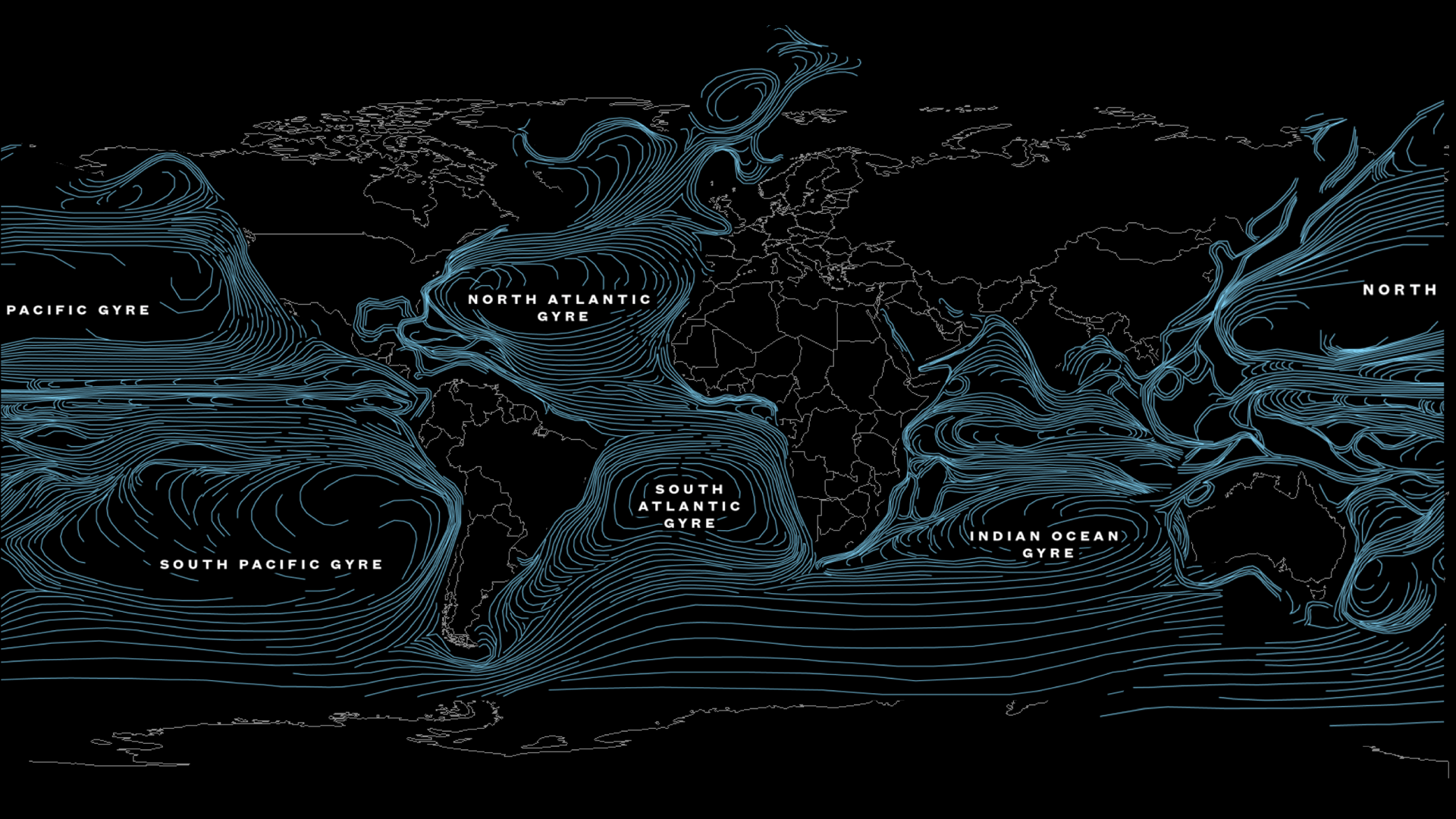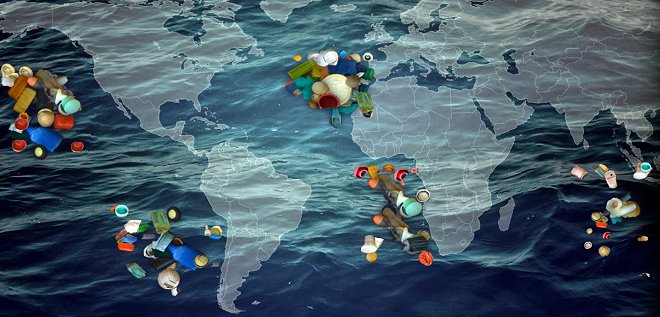Plastic Gyres & Social Justice
Key concepts:
• plastic as an exemplar for environmental justice
• 5 Gyres as a model – how a small NGO can make an impact
• organizing youth
• leading expeditions
Anna Cummins and Marcus Eriksen launched 5 Gyres with an 88 day adventure journeying from California to Hawaii on their Junk Raft, built of 15,000 plastic bottles. Eriksen turned their story into a book, Junk Raft. an ocean voyage and a rising tide of activism to fight plastic pollution (2017). Now they have together founded leap lab to work on the complementary challenge of regenerative food production.
Plastic pollution is a social justice issue. In many countries, waste pickers, often children, sorting through rivers of plastic trash to find pieces to sell, while polluted waterways transport the remainder straight out to sea. 5 Gyres argues that proposed ocean filtration systems need to incorporate an understanding of ocean dynamics and marine ecosystems.
5 Gyres History
5 Gyres began studying the plastic problem in 2008, and in 2009 completed their first Expedition, a 2,600-mile, 88-day journey from California to Hawaii through the North Pacific Gyre on the Junk Raft, a vessel built from 15,000 plastic water bottles. Since then, they have completed 16 Expeditions to study plastic pollution in the ocean.

In 2012, 5 Gyres gathered a group of scientists to establish the world’s first Global Estimate of Marine Plastic Pollution, which they published in 2014. They determined that there were 269,000 metric tons and 5.25 trillion particles on the ocean’s surface. The 2017 United Nations Clean Seas Campaign estimated that there were 51 trillion microplastic particles in the ocean. The 5 Gyre documentary, Smog of the Sea, referring to all the microplastic particles in the ocean, premiered in 2016. In 2015, a study published in Science determined that 8 million metric tons entered the oceans in 2010, enough to cover every coastline in the world. While most of the plastic was from populated countries with poor waste management systems, including China, Vietnam, Philippines, and Indonesia, developed countries such as the United States exported plastic waste with China importing nearly half of America’s plastic waste in 2011.

5 Gyres Mission
5 Gyres is dedicated to understanding and cleaning up plastic marine pollution through exploration, scientific research, education, engaging communities in systemic change, and encouraging corporate partners, policymakers, and the general public to reduce plastic pollution. They run effective Youth Summits with young people.
Youth Summit
Their mission is to empower action against the global health crisis of plastic pollution through science, art, education, and adventure. Their vision is a world free of plastic pollution. Five Gyres refers to the five main subtropical circular current systems located in the North and South Pacific, the North and South Atlantic, and the Indian Ocean. The plastic is trapped within these currents takes at least 10 years to cycle back out, if it not eaten by marine life or sinks to the bottom.
First Reports of Ocean Plastic
5 Gyres recounts that in 1972 Ed Carpenter was the first to report plastic pollution in the North Atlantic. During explorations in the South Atlantic near Cape Town, South Africa in 1980, pre-production plastic pellets and balls of tar known as plasto-tarballs, reportedly from the flushing of oil tankers into the sea were discovered. In 2001, Charles Moore published the first record of what later became known as the Great Pacific Garbage Patch, which the media reported as the size of Texas.
See the app @ earthDECKS.org
Saving Our Oceans from Plastic: articles by Zann Gill
- Adverse Health Effects of Plastic
- Aquaria – Informal Learning Network
- Beat the Microbead
- Bibliography: Plastic Roads
- Boyan Slat: Floater Technology for Ocean Cleanup
- Complex Systems Problems
- Cradle to Grave: Plastic Supply Chain
- Dame Ellen MacArthur: The Circular Economy
- Sylvia Earle: Learning for a Plastic World
- earthDECKS Limelights: Companies to Watch
- Enshrouded in Plastic
- Flamingos Signal the Future We Face
- Floating Trash: More than 4x as bad as we thought
- Give the World a Helping Hand: 3D Prostheses
- Global Ocean Sensing
- Industry Response to the Plastic Challenge
- Nature’s Innovators: plastic consumers
- Ocean Debris Network
- Ocean Ingenuity
- Oceans – Measuring Planet Health
- Plastic Bank – The Exchange Economy
- Plastic – Climate Change Connection: Israel & UBQ
- PLASTIC: Complex Systems Problem
- Plastic: Drinking Water, Table Salt & Mother’s Milk
- Plastic Footprint ~ Carbon Footprint
- Plastic-Eating Enzyme
- Plastic Impact Calculator
- Plastic Pollution Coalition: Campaign vs Single Use Plastic
- Plastic & Public Health: Endocrine Disruptors
- PLASTIC: Overview of National Leadership
- Plastic Roads – Global Innovation Ecosystem
- Plastic Strategies for Innovation
- The Plasticene
- Plastiki: adventure stories & a big message
- Raising Awareness of Plastic Hazards
